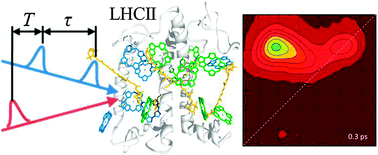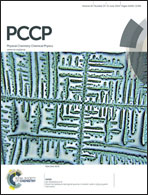Pathways of energy transfer in LHCII revealed by room-temperature 2D electronic spectroscopy
Abstract
We present here the first room-temperature 2D electronic spectroscopy study of energy transfer in the plant light-harvesting complex II, LHCII. Two-dimensional electronic spectroscopy has been used to study energy transfer dynamics in LHCII trimers from the chlorophyll b Qy band to the chlorophyll a Qy band. Observing cross-peak regions corresponding to couplings between different excitonic states reveals partially resolved fine structure at the exciton level that cannot be isolated by pump–probe or linear spectroscopy measurements alone. Global analysis of the data has been performed to identify the pathways and time constants of energy transfer. The measured waiting time (Tw) dependent 2D spectra are found to be composed of 2D decay-associated spectra with three timescales (0.3 ps, 2.3 ps and >20 ps). Direct and multistep cascading pathways from the high-energy chlorophyll b states to the lowest-energy chlorophyll a states have been resolved occurring on time scales of hundreds of femtoseconds to picoseconds.


 Please wait while we load your content...
Please wait while we load your content...